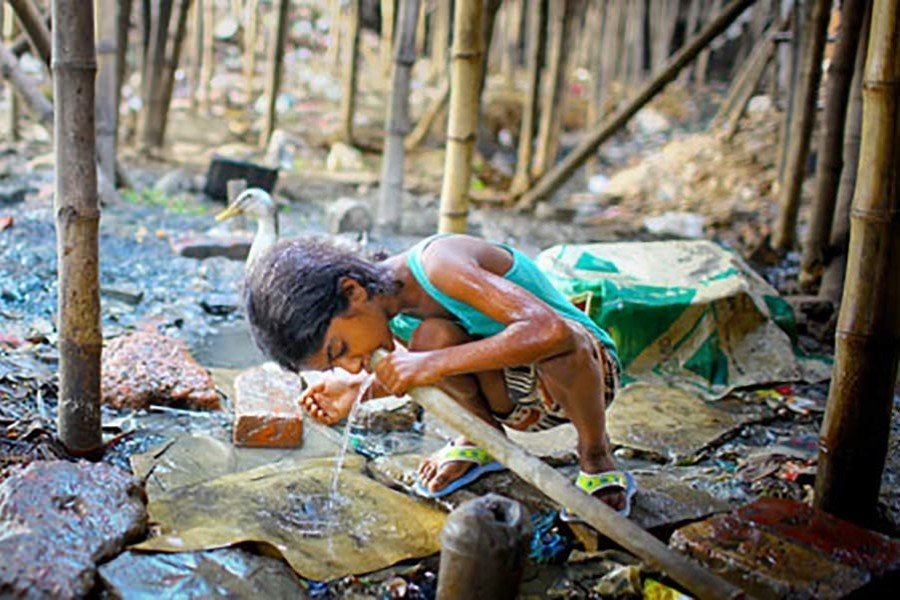One in six children lives in extreme poverty, World Bank-UNICEF analysis shows

Published :
Updated :

One in every six children, or 356 million globally, lived in extreme poverty before the pandemic, as per a new World Bank Group-UNICEF analysis.
The situation is set to worsen further, said the report released on Tuesday, titled Global Estimate of Children in Monetary Poverty: An Update.
The analysis states that sub-Saharan Africa – with limited social safety nets – accounts for two-thirds of children living in households that struggle to survive on an average of $1.90 a day or less per person – the international measurement for extreme poverty. South Asia accounts for nearly a fifth of these children.
The analysis shows that the number of children living in extreme poverty decreased moderately by 29 million between 2013 and 2017.
However, UNICEF and the World Bank Group warn that any progress made in recent years is alarmingly slow-paced, unequally distributed, and at risk due to the economic impact of the COVID-19 pandemic.
“One in six children living in extreme poverty is one in six children struggling to survive,” said Sanjay Wijesekera, UNICEF Director of Programmes.
“These numbers alone should shock anyone. And the scale and depth of what we know about the financial hardships brought on by the pandemic are only set to make matters worse. Governments urgently need a children’s recovery plan to prevent countless more children and their families from reaching levels of poverty unseen for many, many years”, said Mr Sanjay.
Although children make up around a third of the global population, around half of the extreme poor are children. Children are more than twice as likely to be extremely poor as adults (17.5 per cent of children vs. 7.9 per cent of adults).
The youngest children are the worst off – nearly 20 per cent of all children below the age of five in the developing world live in extremely poor households.
“The fact that one in six children were living in extreme poverty and that 50 per cent of the global extreme poor were children even prior to the COVID-19 pandemic is of grave concern to us all,” said Carolina Sánchez-Páramo, Global Director of Poverty and Equity for the World Bank.
“Extreme poverty deprives hundreds of millions of children of the opportunity to reach their potential, in terms of physical and cognitive development, and threatens their ability to get good jobs in adulthood”.
“In the wake of the massive economic disruption caused by the pandemic, it is more crucial than ever that governments support poor households with children now and rebuild their human capital during the recovery”, she said.
Extreme poverty among children has not fallen as much as it has for adults; a larger share of the global poor was children in 2017, compared to that in 2013.
All regions of the world experienced varying levels of decline in extreme poverty among children, apart from Sub-Saharan Africa, which saw a 64 million increase in the absolute number of children struggling to survive on $1.90 a day.
Child poverty is more prevalent in fragile and conflict-affected countries, where more than 40 per cent of children live in extremely poor households, compared to nearly 15 per cent children in other countries, the analysis said.
The analysis also notes that more than 70 per cent of children in extreme poverty live in a household where the head of the house works in agriculture.
The ongoing COVID-19 crisis will continue to disproportionately impact children, women and girls, threatening to reverse hard-won gains towards gender equality.
Social protection measures have a crucial role to play to mitigate coping mechanisms by the poor and vulnerable in both the immediate COVID-19 response as well as the longer-term recovery.
sajibur@gmail.com


 For all latest news, follow The Financial Express Google News channel.
For all latest news, follow The Financial Express Google News channel.